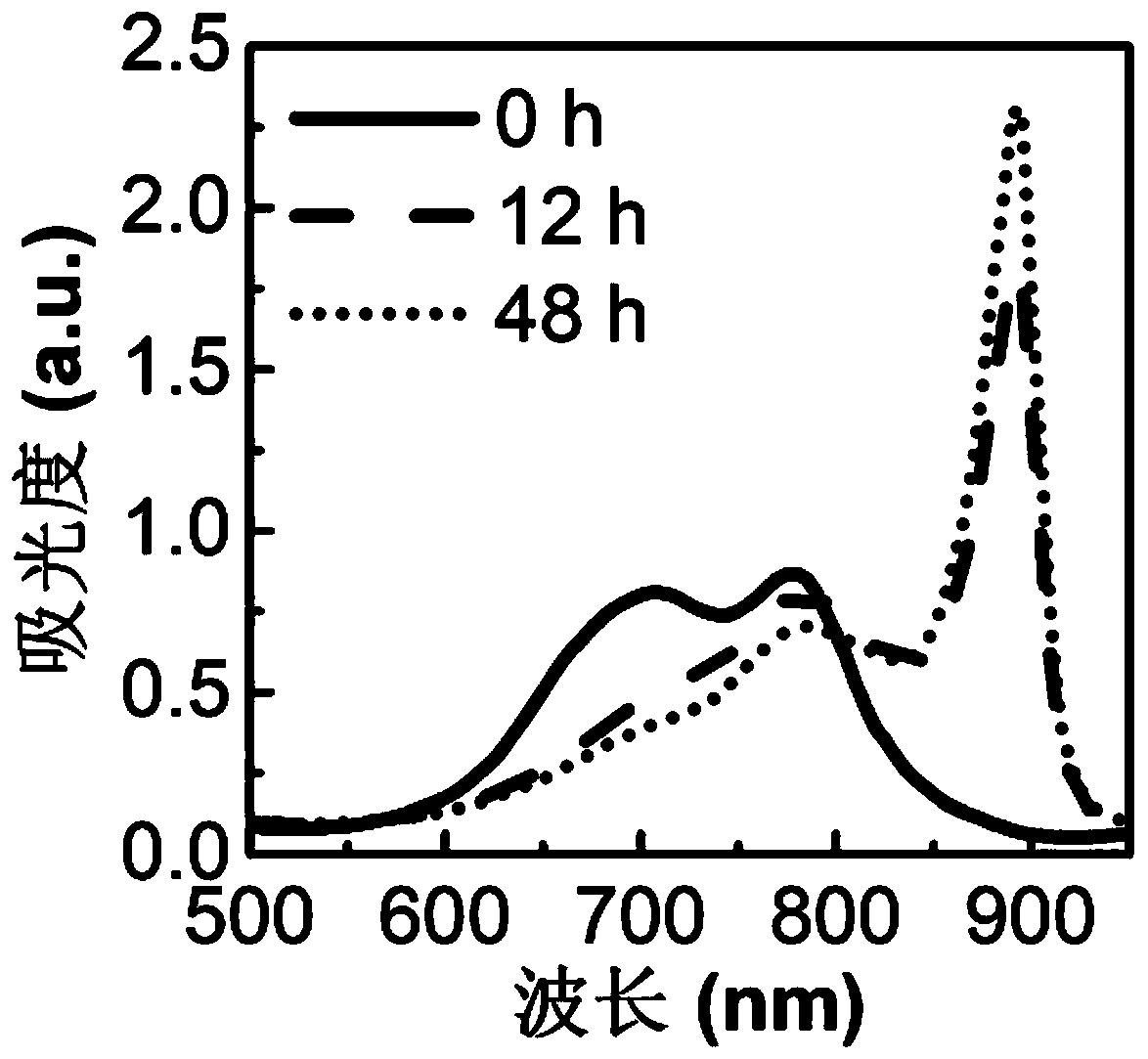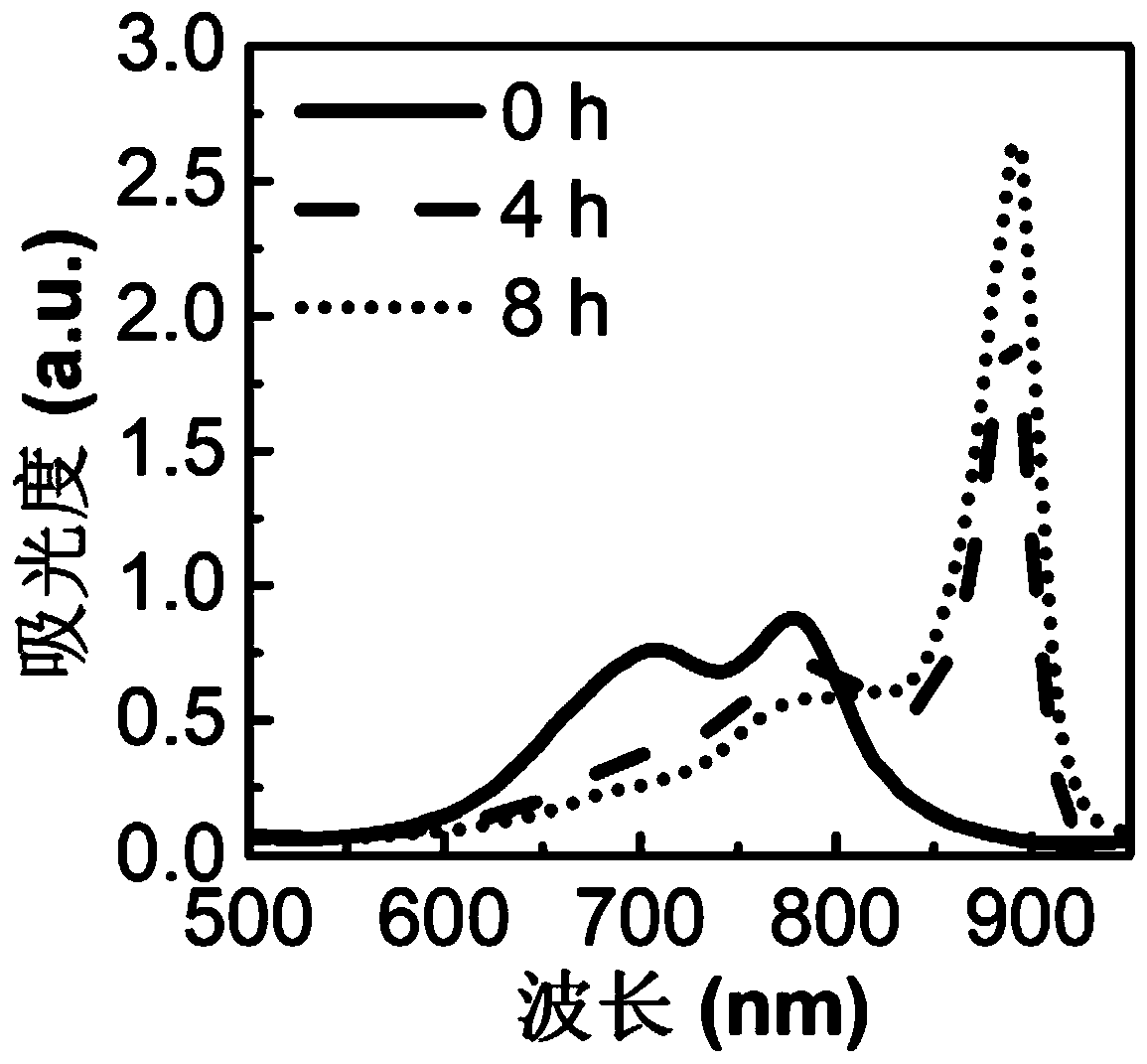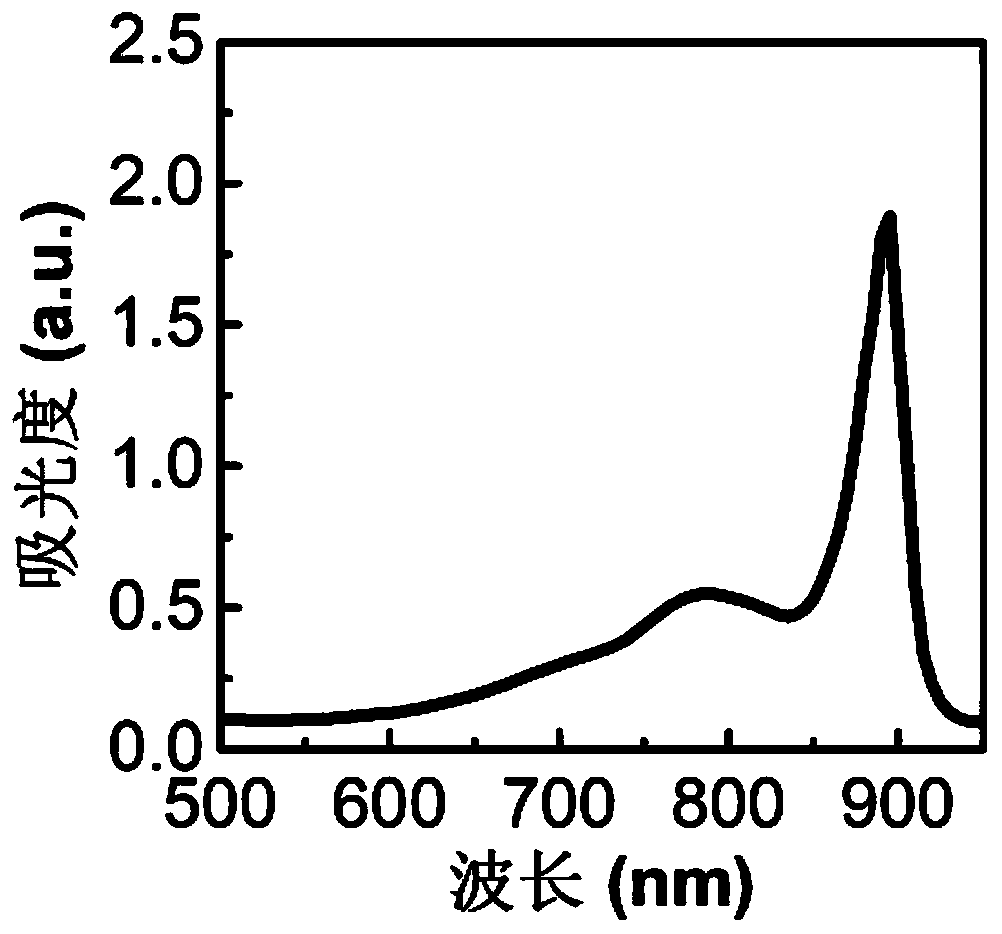Compound nanometer micelle for packaging dye J aggregate and preparing method and application of micelle
A technology of nanomicelles and aggregates, applied in the field of medicine, can solve problems such as poor stability in vivo, long preparation time, and unsatisfactory yield, and achieve good thermal stability and outstanding structural stability.
- Summary
- Abstract
- Description
- Claims
- Application Information
AI Technical Summary
Problems solved by technology
Method used
Image
Examples
Embodiment 1
[0069] This embodiment provides a method for inducing J aggregation of the dye indocyanine green (ICG), that is, preparing a composite nanomicelle containing ICG J aggregates. The specific preparation method is:
[0070] The dye ICG (0.05mg / mL) and DSPE-PEG2000-HN 2 (0.1mg / mL) was co-dissolved in ultrapure water with a pH value of 7.5 and stirred at 25°C for 48h to obtain the composite nanomicelles loaded with dye J aggregates, using DSPE-PEG@ICG-J- 1 indicates that the obtained DSPE-PEG@ICG-J-1 was concentrated by ultrafiltration and then stored in the dark at 4°C.
[0071] The detection of the absorption spectrum of the solution system at different time points in the above stirring process is as follows: figure 1 Shown: It can be seen that most of the ICG has been converted into J aggregates at 12 hours, and the proportion of J aggregates is also higher as the stirring time is prolonged.
Embodiment 2
[0073] This example provides a method for inducing J aggregation of the dye ICG, that is, preparing a composite nanomicelle containing ICG J aggregates. The specific preparation method is as follows:
[0074] The dye ICG (0.5mg / mL) and DSPE-PEG2000-HN 2 (0.5mg / mL) was co-dissolved in ultrapure water with a pH value of 8.5, first stirred at 80°C for 15min, and then stirred at 25°C for 8h to obtain the composite nanomicelles loaded with dye J aggregates, Expressed as DSPE-PEG@ICG-J-2, the resulting DSPE-PEG@ICG-J-2 was concentrated by ultrafiltration and stored at 4°C in the dark.
[0075] The detection of the absorption spectrum of the solution system at different time points in the above stirring process is as follows: figure 2 Shown: It can be seen that ICG has been basically transformed into J aggregates at 8h.
Embodiment 3
[0077] This example provides a method for inducing J aggregation of the dye ICG, that is, preparing a composite nanomicelle containing ICG J aggregates. The specific preparation method is as follows:
[0078] The dye ICG (1mg / mL) and DSPE-PEG2000-HN 2 (0.5mg / mL) was co-dissolved in phosphate buffer with a pH value of 4.0, stirred at 25°C for 8h to obtain the composite nanomicelles loaded with dye J aggregates, and DSPE-PEG@ICG-J -3 indicates that the obtained DSPE-PEG@ICG-J-3 was concentrated by ultrafiltration and then stored in the dark at 4°C.
[0079] The solution system when 8h in the above-mentioned stirring process is carried out the detection of absorption spectrum, the result is as follows image 3 Shown: It can be seen that ICG has been basically transformed into J aggregates at 8h.
PUM
 Login to View More
Login to View More Abstract
Description
Claims
Application Information
 Login to View More
Login to View More - R&D
- Intellectual Property
- Life Sciences
- Materials
- Tech Scout
- Unparalleled Data Quality
- Higher Quality Content
- 60% Fewer Hallucinations
Browse by: Latest US Patents, China's latest patents, Technical Efficacy Thesaurus, Application Domain, Technology Topic, Popular Technical Reports.
© 2025 PatSnap. All rights reserved.Legal|Privacy policy|Modern Slavery Act Transparency Statement|Sitemap|About US| Contact US: help@patsnap.com



